Dear Artist,
An old friend asked if she could schedule a quick zoom painting lesson for her grade-schooler. A recent shipment of supplies has set her daughter on the precipice of some serious art making. Now, while I wait for our zoom, I’m wondering what a helpful offering on art could be. “The painter,” said writer Robert Brault, “needs all the talent of the poet, plus hand-eye coordination.”
Begin by squeezing onto a palette, 6-8 acrylic colours in a line from warm to cool, like a rainbow. You can refer to a colour wheel for help — your palette will be whatever colours you have on hand. Try to use at least one red, one yellow and one blue, as they’re the primaries and will allow to you mix, with variation, so many other interesting colours. Mixing is a matter of practice and is where much of your individualism, personality and understanding of the visual world will develop. You can also include black and white for darkening and lightening, and a splash of acrylic medium, if you have it, for thinning, though water works. Have on hand at least three sizes of brushes in a bucket of water, and a rag for wiping them.
Have you chosen a subject? A nice start is to arrange, a few feet front of you, some objects from around the house. Choose just a handful of things that have varying shapes, with curves and points, one long-sided thing and one thing that is taller than the rest. You can use flowers or fruit or shoes or even your dog or your brother or anything else that looks like it might be fun to try to paint. If you can find a theme in your selections, it will give your work more meaning.
Now, paint an imprimatura as a thin, first layer in a warm colour like pale pink or apricot, covering the whole canvas with a big brush. You might want to do several at a time. After they dry, you’re ready to go. Here are a few ideas:
In a contrasting colour, follow the outer and inner edges of your subject without picking up your brush. This is called a contour drawing and helps you warm up and develop a characteristic line in your brushwork. It can also capture, without overdoing it, the vibe of your subject.
Next or instead, study the shapes in the objects, laying them down as abutting and overlapping “form zones.” Even more fun is to study the negative areas between the objects and paint those. If you do it this way, you will see your subject appear in your imprimatura colour, after which you can accentuate the objects with a few confident strokes.
Lastly, squint at your subject to find the darkest and lightest spots. You can go in with a dark colour that isn’t just black, punching in those areas and also the lightest ones. Try to mix the colour you really see, not just what you think you see. “One eye sees,” said Paul Klee, “the other feels.”
Sincerely,
Sara
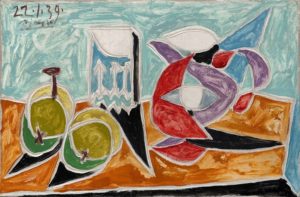
Still Life: Fruits and Pitcher, January 22, 1939
Oil and enamel on canvas
27.2 x 41 cm
by Pablo Picasso
PS: “He unfolds, as a painter, that which has not yet been said; he translates it into absolute terms of painting – something other than reality.” (Paul Cezanne)
Esoterica: Stop just before you think you’re really finished. You have made something new. After letting your work dry, give yourself a chance to study it from a distance while doing something else, like eating dinner. You can ask yourself a few questions:
“Is my painting describing something in a new or unexpected way? Is it telling me a story? How does it make me feel?”
“Is my painting fun to look at all on its own? What are my favourite parts, and why?”
“When I try again, what will I do differently?”
Have you considered a Premium Artist Listing? With each letter, an artist is featured at the bottom of this page. The Premium Artist Listings are a means of connecting artist subscribers through their work. Proceeds from each listing contribute to the production of The Painter’s Keys.
“I suppose what you’re doing as a painter is making a record of your trip through life. I can’t think of any job that is quite as satisfactory as doing a painting.” (Robert Genn)
Happy Birthday to my Dad, who would have been 84 today.
Featured Workshop
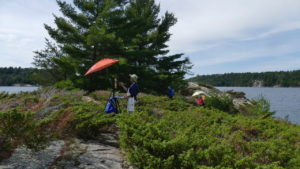 The Killarney are of Ontario is in what is called the ‘near north’. The landscape is wild and rugged. Giant granite cliffs plunging deep into the glacial lakes. There are no roads leading to our painting locations. We travel by a large, sturdy pontoon boat. This is a self-catered retreat. You bring your own provisions and cook your own meals in our fully equip cabins at a northern camp. Our instructor, Keith Thirgood, has been teaching artists his own unique approach to painting for over 12 years. Learn how to find order in the chaos, control your colours and create paintings that work. Learn modern colour theory, values, shapes and lines, what makes for a good painting. This retreat is suitable for beginners wanting to learn to paint in a fun, outdoor location, as well as more experienced studio artists who want to try plein air, plus artists who are looking to loosen up and paint in a more post-impressionist style. To find out more and register, please visit www.wilsonstreetstudios.
The Killarney are of Ontario is in what is called the ‘near north’. The landscape is wild and rugged. Giant granite cliffs plunging deep into the glacial lakes. There are no roads leading to our painting locations. We travel by a large, sturdy pontoon boat. This is a self-catered retreat. You bring your own provisions and cook your own meals in our fully equip cabins at a northern camp. Our instructor, Keith Thirgood, has been teaching artists his own unique approach to painting for over 12 years. Learn how to find order in the chaos, control your colours and create paintings that work. Learn modern colour theory, values, shapes and lines, what makes for a good painting. This retreat is suitable for beginners wanting to learn to paint in a fun, outdoor location, as well as more experienced studio artists who want to try plein air, plus artists who are looking to loosen up and paint in a more post-impressionist style. To find out more and register, please visit www.wilsonstreetstudios.
Featured Artist
Gardens are my enduring inspiration, and getting to the heart of the flower, my passion.

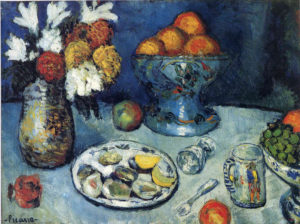
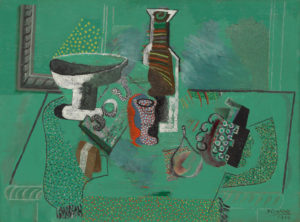
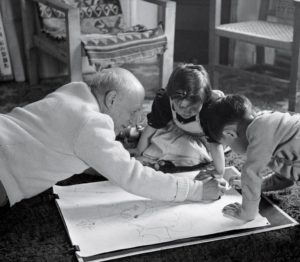
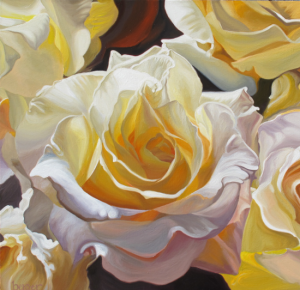



28 Comments
Thank you Sara, I always enjoy your letters! I hope you are doing great and Happy Birthday to your dad, the great Robert Genn.
Dear Sara,
Happy Birthday to Robert! Your letters bring joy into the day.
We met your Dad in Victoria when he was judging a morning class. And we had a chance to talk about our friend john Lidstone whole he had mentioned in a painters key column. He did not know that John who had set up Vancouver’s school art program had passed away. John was one of our ushers at our wedding and had gotten Herb to come to UBC for his junior year – a long time ago.
As an occupational therapist I admired his ability to build an easel for working while prone. And we now admire both his words and yours in these columns. While we are staying-in place in NY his paintings brig us closer to BC and getting back to our BC home. You inspire me and other aspiring souls.
Sara,
Great advice , even for experienced artists, particularly when we don’t know what to paint.
As to your father, I think of him often. I wish I had met him in person. Alas, I never had the opportunity.
My father died 35 years ago. I still deeply miss him. He was my hero.
Be well, Sara.
-Luc
Thank you Sara. Great way to honour got dad keeping up these letters. Celebrate his birthday with joyful memories of which you must have so many. Great tips for the not-such-beginners as well ;)
Wishing you fond memories of your dad on his birthday. I can’t help but ponder what unique humour and advice he would give us during this time. At least he wouldn’t have to twist arms to just go to your room …. we are here for awhile. Now to make use of such a gift as time to create. Stay safe.
I appreciate your post here, Sara, and look forward to them always. I feel like I just took a class with you and it was wonderful. I’ve yet to offer a workshop over Zoom but am looking forward to it and appreciate the clear scaffolding you offer here. You make it sound so simple and fun. I’m in an Akimbo workshop and put your link out in a community space there. I’m so much hoping you got a few new members–one gal wrote to say she’d been following The Painters Key for years! It made me like her even more.
Happy birthday to your gifted Dad, the legendary Robert Genn–I bet he’s smiling on your work down here and so very, very happy.
One of your best!
I really enjoyed your online class here, even without being on Zoom! :) Sara, thank you for continuing your father’s legacy with such elegance. I appreciate how you add your own powerful brush strokes in the letters, they keep me coming back for more.
Happy Birthday to your Dad! He was an incredible man. He inspired us all, as do you!
Really great advice! One caveat: If it’s a child–be careful about offering much advice at all. Encourage experimentation. I’ve seen too many talented children whose parents, meaning well and intending to encourage talent, overwhelm with “the best everything” and inadvertently make the child unconciously feel like painting is “Mom’s thing, not mine”. It’s got to be their thing entirely. For a long time.
bjb
All lovely, thoughtful advice for getting art-making underway, however, I have to step in and challenge one colour instruction! Even with my primary age students, I recommend not using black as a “darkening” colour. It does darken, but adds an annoying greying effect as well. I teach to darken only with complimentary colours, i.e.: red green, orange,–>blue and yellowpurple–and the variations from there. I recommend only using black for local colour. Just sayin’ … :O) Remembering your dad on his birthday! <3
Just to clarify: darkening colours with complimentaries: red with green and vice versa; orange with blue and vice versa; and yellow with purple and vice versa.
Thank you, Sara! Your letters are sustenance in these strange times. I am so happy to receive each one.
That was a wonderful lesson. Thanks and Happy Birthday to your Dad! We are so lucky that he shared his thoughts & knowledge with us.
Good lesson but if you’e painting with acrylics it’s better to only set up a few colors that you know you are going to use or mix colors as you use them, instead of setting up a palette as if you were painting with oils. For a beginner the paint will become stiff too quickly if not used soon enough and this is discouraging for a beginner
I’m signed up to teach a class this summer but it is now likely that it won’t be held in person. I was asked if I could teach it as a “Zoom” class. I wasn’t sure how that could work but this article is giving me some ideas. Thanks for the inspiration!
What a wonderful letter. Thanks! I am grateful you are carrying on the tradition your father started. You honor him so well by continuing these fine letters. They are a joy to read.
while I never met your father, his letters made him into one of my favorite uncles—and then you, a favorite cousin.
Stay well. and thank you for your notes on art and life—
Happy Birthday to your dear father; his letters were always a blessed connection to the art world from my remote corner. It’s wonderful that you continue. My mother also died too soon, also of pancreatic cancer. She would have been 87 this year. That always gives me a bitter feeling: I know many people, still vibrant and strong at 87. Were your Dad still here, at 84 he’d still be painting every day, I’m sure, and occasionally entertaining guests in his studio, and keeping all of us on our toes with his sage advice!
Your Dad was right, painting is like a diary of sorts, not just a diary of his life, but a visual representation of who he was in this world, and it must be wonderful for you to be able to look at his paintings and feel his presence once again.
Thank you Sara for the wonderful guidance. And for letting folks know that its your dad’s birthday! How delightful to get to share in his celebration.
I appreciate everyone :) the best wishes and bright times creating.
Happy birthday in heaven Robert! Thank you Sara!
A happy remembrance for you of your father’s birthday, Sara — his life and wonderful letters live on through you and your work. I can’t forget the day he died in 2014 as it was my birthday (as well as yours) and my father-in-law also died that day — but now I won’t forget his birthday either, as now I know it is the same date as my mother’s passing, May 15, 2014. Rather a lot of coincidental dates!
Thank you, Lisa. Both May 15th and May 27th such special dates in your family and ours.
Wishing you a very happy early birthday…
In friendship, Sara
This is such a great letter. For the beginner and the experienced painter! Thanks. Especially now that we are doing a lot of painting in our studios (or at the kitchen table). It really is an excellent idea and strategy to paint from some real objects, makes for more freshness than painting from photos. And if achieving perspective and size relationships is a struggle, look at Picasso’s work, he and the other Cubists weren’t so troubled.
RIP Robert. You are missed, but we thank you for your wonderful daughter – and thanks to you, Sara.
Yes, one of the BEST; and through you, he still is. Your inspire. Be well Sara.
Painting and poetry are so similar. Being students of both disciplines are as important as an athlete doing cross training
– GB